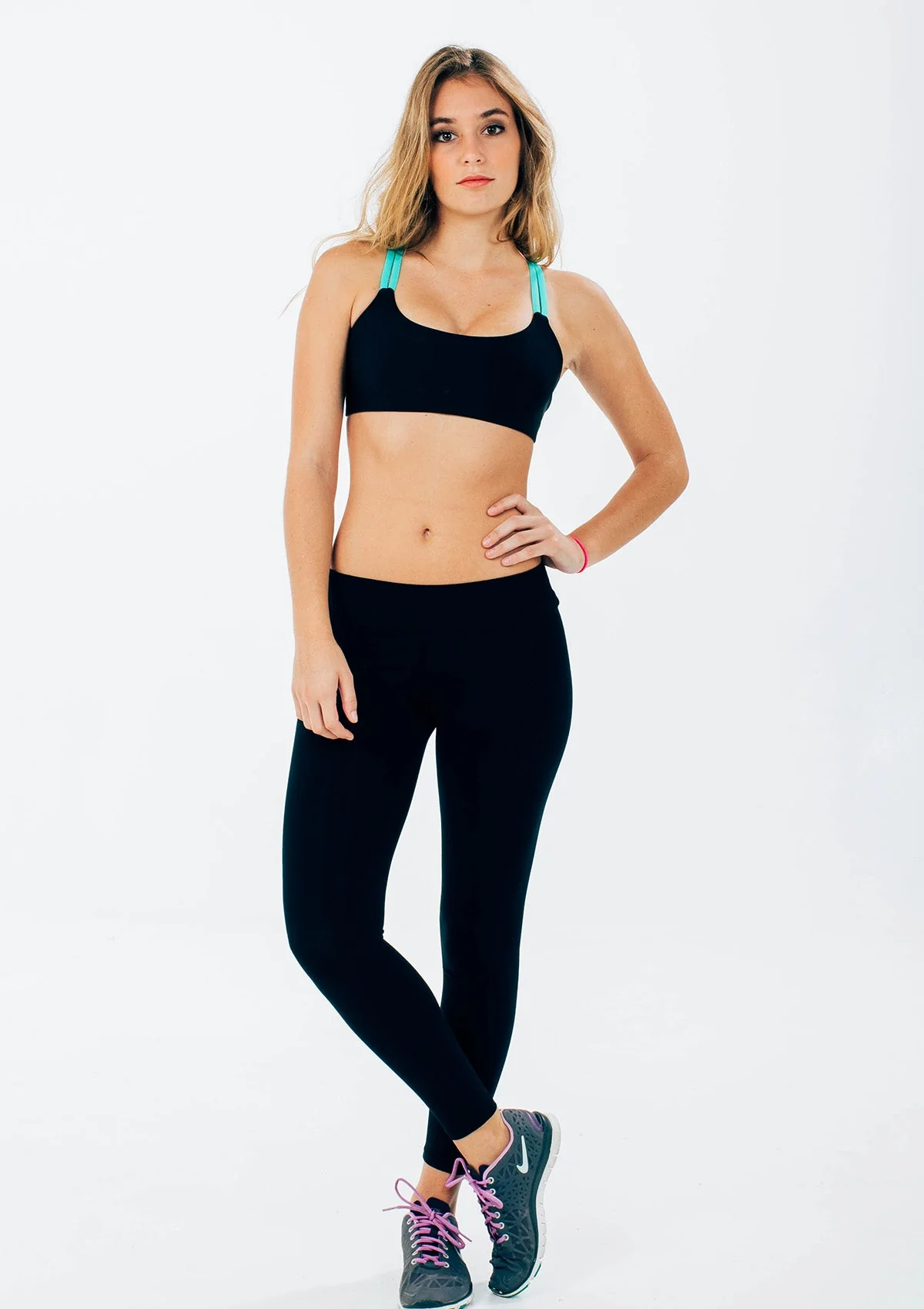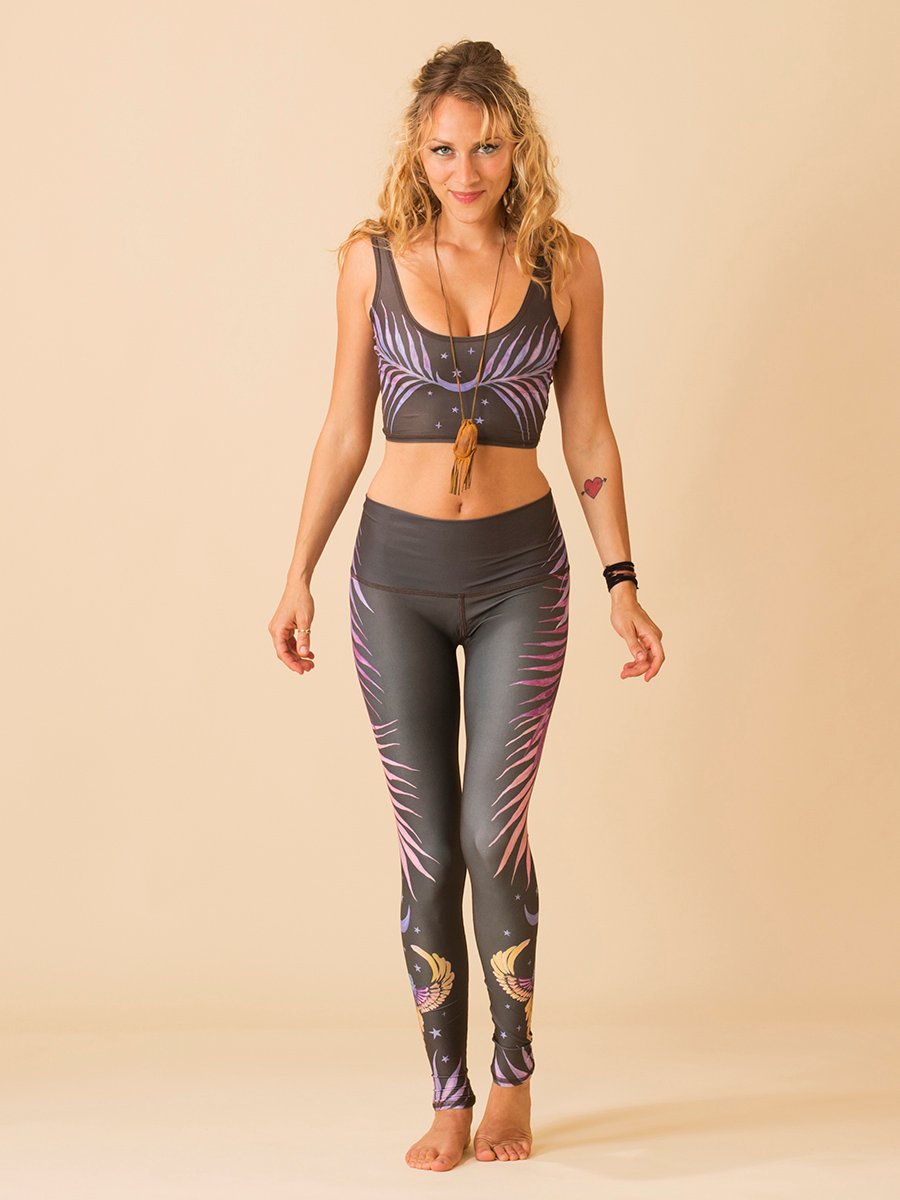When I first entered the yoga apparel industry, I thought leggings and yoga pants were basically the same thing.
But after years of handling fabrics, testing prototypes, and manufacturing both for global brands, I can tell you — they’re not the same.
So, what’s the difference between leggings and yoga pants?
In short: leggings are designed for everyday comfort, while yoga pants are built for performance, movement, and flexibility.
Table of Contents
- Quick Answer
- 1. The Key Differences Between Leggings and Yoga Pants
- 2. Fabric & Construction: Why Yoga Pants Cost More
- 3. Design & Fit Differences
- 4. Which Should You Choose?
- 5. Brand Examples and Use Cases
- FAQs
- How FuKi Yoga Helps Brands Create Both
Quick Answer
The main difference between leggings and yoga pants lies in functionality and fabric:
| Type | Purpose | Fabric | Compression | Transparency | Ideal Use |
|---|---|---|---|---|---|
| Leggings | Everyday wear | Cotton or thin blends | Low | May be see-through | Casual or layering |
| Yoga Pants | Sports & movement | Stretch nylon, spandex | Medium–High | Opaque | Yoga, pilates, gym |

Think of it this way: leggings are for lounging, yoga pants are for living and moving.
1. The Key Differences Between Leggings and Yoga Pants
From my hands-on experience in textile production, the difference starts at the fiber level.
Yoga pants use technical performance fabrics, while leggings often use lighter lifestyle materials.
| Feature | Leggings | Yoga Pants |
|---|---|---|
| Fabric Weight | Light to medium | Medium to heavy |
| Elastic Recovery | Moderate | Excellent |
| Waistband | Simple stitched | Wide, reinforced, high-rise |
| Durability | Short-term | Long-term |
| Purpose | Fashion or layering | Active movement & yoga |
The goal of yoga pants is support and structure, while leggings focus on softness and stretch.
2. Fabric & Construction: Why Yoga Pants Cost More
As a manufacturer, I can confirm most of the cost difference comes from fabric and finishing.
- Yoga pants use nylon-spandex or recycled blends that offer 4-way stretch, moisture control, and squat-proof thickness.
- Leggings, on the other hand, often use cotton or polyester without compression, making them more casual.
- Yoga pants also include flatlock stitching, gusset panels, and reinforced waistbands for durability and movement.
| Detail | Leggings | Yoga Pants |
|---|---|---|
| Fabric Type | Cotton / Polyester | Nylon / Lycra / RPET |
| Production Cost | Low | Higher |
| Stitch Type | Overlock | Flatlock (anti-chafe) |
| Sweat Resistance | Low | High |
Simply put, yoga pants are engineered like sportswear; leggings are not.
3. Design & Fit Differences
Yoga pants are made to move with your body, while leggings are made to sit comfortably.
Here’s how that affects their fit and purpose:
| Element | Leggings | Yoga Pants |
|---|---|---|
| Rise Options | Mid to low | Mostly high-rise |
| Compression | Minimal | Moderate to sculpting |
| Seams | Decorative or basic | Functional, ergonomic |
| Opacity | May show under bright light | Always opaque |
| Waistband Feel | Soft | Firm yet comfortable |
The fit of yoga pants provides more confidence and coverage during dynamic movement.
4. Which Should You Choose?
Here’s my honest suggestion based on your lifestyle:
✅ Choose Leggings if you:
- Want something soft for lounging or layering
- Prefer affordability and versatility
- Don’t need full compression or sweat control
🧘 Choose Yoga Pants if you:
- Practice yoga, pilates, or gym workouts
- Need non-transparent, sweat-wicking fabric
- Value support, shape, and long-term wear

Personally, I recommend having both — leggings for comfort days, yoga pants for performance.
5. Brand Examples and Use Cases
| Brand | Product Type | Focus | Price Range (USD) |
|---|---|---|---|
| Lululemon | Yoga Pants | High-tech performance | $98–$160 |
| Born Living Yoga | Yoga Pants | Sustainable, minimal design | $70–$130 |
| Aerie | Leggings | Casual, affordable | $30–$60 |
| FuKi Yoga (OEM) | Custom Yoga Wear | Private label production | Custom pricing |
These examples show that yoga pants typically sit in the premium range due to technical construction and ethical production.
FAQs
Q1: Are yoga pants thicker than leggings?
Yes — yoga pants use denser fabrics to ensure they’re squat-proof and supportive.
Q2: Can I wear leggings for yoga?
Yes, but only if they’re opaque and stretchy enough — not all leggings qualify.
Q3: Why do yoga pants cost more?
Because of high-performance fabrics, R&D, and ethical manufacturing costs.
Q4: Are yoga pants and active leggings the same?
Active leggings are a hybrid — softer than yoga pants but more functional than fashion leggings.
Q5: Which lasts longer?
Yoga pants. Their reinforced seams and fibers resist pilling and stretching out.
How FuKi Yoga Helps Brands Create Both
At FuKi Yoga, we design and manufacture both leggings and yoga pants for brands worldwide.
Our goal is to help you build a collection that balances comfort, performance, and sustainability.
We specialize in:
- 🌿 OEM/ODM yoga wear production (leggings, yoga pants, bras, jumpsuits)
- ♻️ Eco-certified fabrics like recycled nylon, bamboo, organic cotton
- 🧵 Private label services with custom designs and logos
- 🚀 Low MOQ manufacturing — perfect for small and growing brands
- 🪡 Pattern and fit consultation to match brand positioning
Whether your market focuses on fashion leggings or technical yoga pants,
FuKi Yoga ensures both look premium and perform flawlessly.
👉 Learn more: Visit FuKiYoga.com – Sustainable Yoga Wear Manufacturer


